A common myth about brain development is that our brains become fully developed at a certain point, usually in the later stages of childhood. This myth suggests further brain development stops.
In fact, the opposite is true. Brain development is continuous, due to something called neuroplasticity. Our brains can regenerate cells after sustaining damage, assist us in learning new skills, and much more. Thanks to modern technologies such as fMRI machines (functional Machine Resonance Imaging), we can now observe the changes made in our brains when we acquire skills or undergo rehabilitation to restore functional ability.
In this article, we’re going to discuss neuroplasticity in detail: what it is, when it was discovered, and how you can utilize the functions of neuroplasticity to improve your life.
What are our brains made of?
Before we get into neuroplasticity, let’s take a closer look at the brain itself.
A complex, multifaceted organ, the brain controls memory, thought, touch, motor skills, and every process that regulates the body. In the next sections, we’ll discuss the basic makeup of the brain, specifically the grey matter and white matter, which are necessary for understanding the way neurons and their synapses function. This will lay the groundwork for our discussion of neuroplasticity.
Grey matter, white matter, and neuronal connections
Grey matter, composed of round neutral cell bodies called neuron somas, is the darker portion of the outer layer of the brain. Its primary function is to process and interpret new information.
Neuron somas refer to the body of neurons communicating with each other through electrical and chemical signals. Synapses (or “synaptic connections”) are the points at which neurons connect. The information transmitted via this process is sent to the nervous system, which allows us to control our bodies in various ways.
White matter sits deeper in the brain and transmits this information to the rest of the central nervous system, thus completing the process of how that information is received by the rest of the body.
Imagine the brain’s grey matter as the control center of the brain. The commands we give it, which could be conscious commands, such as turning the page of a book, or unconscious conscious, such as breathing or experiencing pain, are developed here. These commands are received by the rest of the body and put into action, thanks to white matter.
The amount of information we can process at one time corresponds to the size of the grey matter in our brains. When it’s larger in certain areas, as we’ll explain below in a study on London cab drivers, we’re able to process more information.
Our white matter, when the neurons and synapses have stronger connections, is then able to interpret larger amounts of information more efficiently. What this means is, we store the basic information, for example riding a bike, which gives us room to store more complex information, such as improving our stability on the bike or learning tricks. This is neuroplasticity.
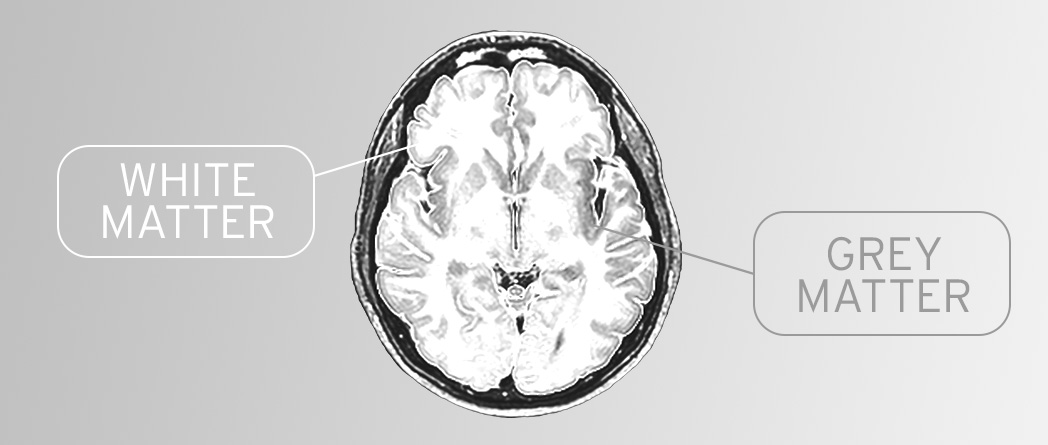
What is neuroplasticity?
The earliest mention of the term “plasticity” regarding behavior was in 1890 by William James in a psychology journal. He proposed the idea that brain function does not stop advancing when we reach adulthood, but his proposal was largely ignored by fellow experts in the field.
James’s proposal met resistance because the dominant thinking among practitioners up until the 1970s was that brain development is fixed and unchangeable from a certain point on. However, James’s early mention of plasticity inspired other scientists to contribute to his theory, slowly changing the dominant thinking regarding brain development.
Neuroplasticity (also called brain plasticity or neuronal plasticity) is a form of adaptation. Structural and functional changes are made to the brain in response to “intrinsic or extrinsic stimuli”, which cause the brain to reorganize its neuronal structure, functions, and connections. These neurons are the grey matter on the outer surface of the brain.
One of the earliest studies performed on neuroplasticity was conducted on taxi drivers in London in the early 2000s. Due to their years of experience and accumulated knowledge about the layout of the city, brain scans showed increased grey matter volume in the mid posterior hippocampi, while decreasing in the anterior hippocampi.
What this suggested was that spatial knowledge is associated with hippocampal grey matter, because this area grew in size. This allowed scientists to better understand how spatial knowledge is acquired in the brain. These scans contrasted with those of London bus drivers, driving on fixed routes, whose brain scans did not show these changes.
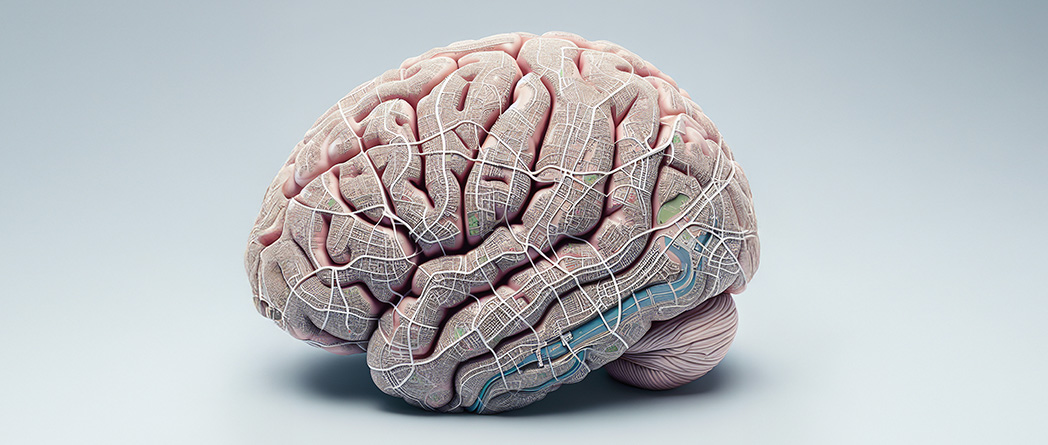
Synaptic pruning
To understand neuroplasticity and the brain’s ability to reorganize itself, we also need to discuss the process of synaptic pruning.
During the early childhood years of brain growth, neurons and synapses grow at a rate of up to 40,000 new synapses per second, most of it happening before the age of five. Our external stimuli and environments determine which synapses grow and strengthen, meaning the others will weaken and fade.
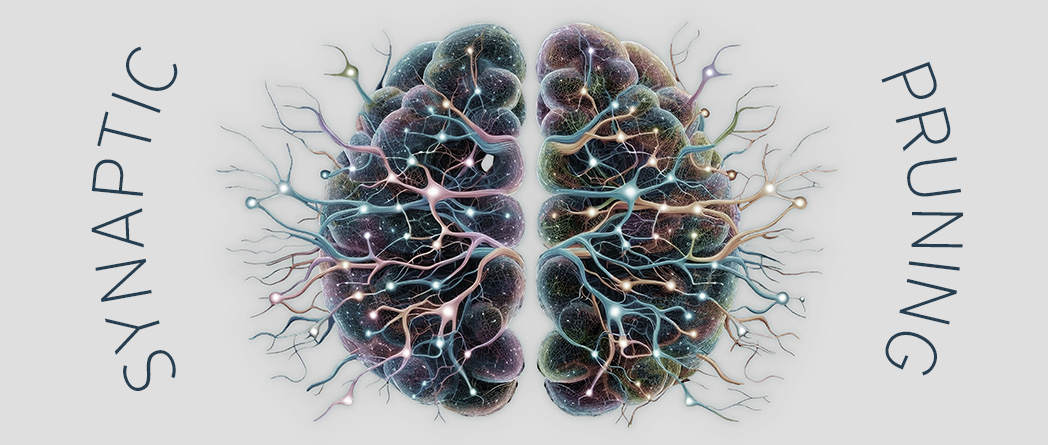
Processing visual information, speaking, and walking are things adults do without thinking. For a child, they require concentrated effort, which means the neurons and synapses forming to assist these activities will strengthen, taking precedence over others.
Children who grow up speaking more than one language at home develop many strong neuronal connections to do with language processing. However, take this child out of a multilingual environment at a young age, and their multilingual capabilities will dwindle. Since the child no longer needs other languages to communicate, its quickly developing brain will focus on other areas.
Types of neuroplasticity
Research suggests there are different types of neuroplasticity which demonstrate how the brain rewires itself.
Structural neuroplasticity
Structural neuroplasticity can be understood as the brain’s ability to change the connections between neurons. When a person learns a new skill, new connections are made in the brain so that the information can travel and be processed. These connections are created in the grey matter and sent to the white matter, so that the central nervous system can employ the skill.
If you pick up a guitar for the first time, you’ll hardly know what to do with it. Six months later, after you’ve been learning intensively and practicing every day, you’ll have new experiences to pull from. Structural neuroplasticity is responsible for having created thousands of neuronal connections that make it easier to continue your learning momentum. You have changed your brain.
Functional neuroplasticity
Functional neuroplasticity is more relevant in rehabilitation after brain injuries. It refers to the body’s ability to divert functions or reroute the information processing to other parts of the brain.
For example, if you keep your arm in a sling after a fracture or bone break, you will rely on your healthy arm to compensate. You will notice that you are learning to use your opposite arm more quickly than if you hadn’t been injured. Functional neuroplasticity helps divert more information than it usually would to this part of the brain because it recognizes that you need it.
A common neuroplasticity myth
Some research suggests that using your non-dominant hand is good for improving neuroplasticity. The idea is that, if you’re right-handed and you occasionally brush your teeth with your opposite hand or learn to write left-handed, this will strengthen the connections between your brain’s right and left hemispheres.
It sounds plausible, but a 2016 study demonstrated otherwise. 22 right-handed adults undertook a 10-day illustration class using their left hands. They underwent brain scans before and after the task was completed. While the participants showed improved ability in writing with their non-dominant hands, there was no visible change in cross-functionality between hemispheres that would contribute to anything other than the specific task undertaken.
Neuroplasticity and injuries
Injury recovery demonstrates one of the most remarkable aspects of neuroplasticity and the brain’s ability to adapt to change.
Neuroplasticity is crucial when everyday functions are lost or impaired. Physical trauma such as head injuries and acquired disorders like Multiple Sclerosis, strokes, tumors, and infections all cause the brain to employ neuroplasticity, because it allows it to salvage remaining function and develop new function.
Physical therapy is essential in neurorehabilitation through neuroplasticity, demonstrating the brain’s fascinating capability to regain skills after serious damage.
These are some of the main ways in which neuroplasticity plays a role in physical and cognitive recovery:
-
Dendritic remodeling: Dendrites are extensions of nerve cells, and dendritic remodeling changes their length and patterns when connections have been severed. Shorter extensions and modified patterns allow the brain to salvage some loss of functioning.
-
Immediate neuroplastic alterations: Occurring soon after a brain injury, these cellular and synaptic alterations change the flow of information in the brain, to avoid further negative effects where the brain has suffered the most damage.
-
Compensatory action vs maladaptation: In the recovery period, further damage can be done to brain functioning if the damaged areas continue to be used. In response, the brain diverts activities to areas less affected or unaffected. Maladaptation can occur if this compensatory action prevents healing in the affected areas, leading to irreversible damage.
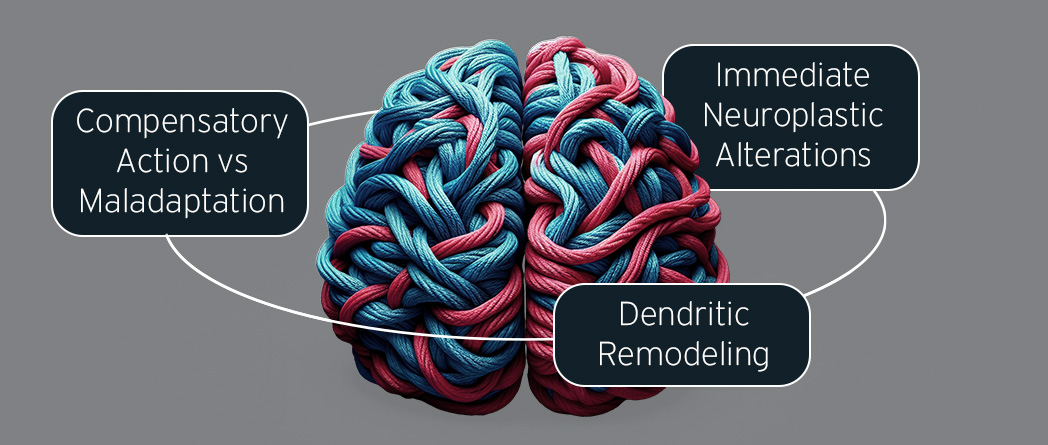
Neuroplasticity and rehabilitation
Full rehabilitation requires conscious effort. Neuroplasticity creates the conditions in which rehabilitation is possible while minimizing further damage, but what comes next is cognitive and physical rehabilitation.
-
Cognitive rehabilitation: Health care professionals encourage many different activities to assist with cognitive rehabilitation, including problem-solving exercises, memory boosting games, reading texts out loud to absorb information better, and speech language therapy exercises.
-
Physical rehabilitation: Neuroplasticity plays a role here by helping patients relearn to use damaged parts of the body. Once an injury has had a negative impact on one body part, the role it initially played must be gradually re-introduced through physical exercises using therapy bands and exercise equipment via intensive sessions with healthcare professionals.
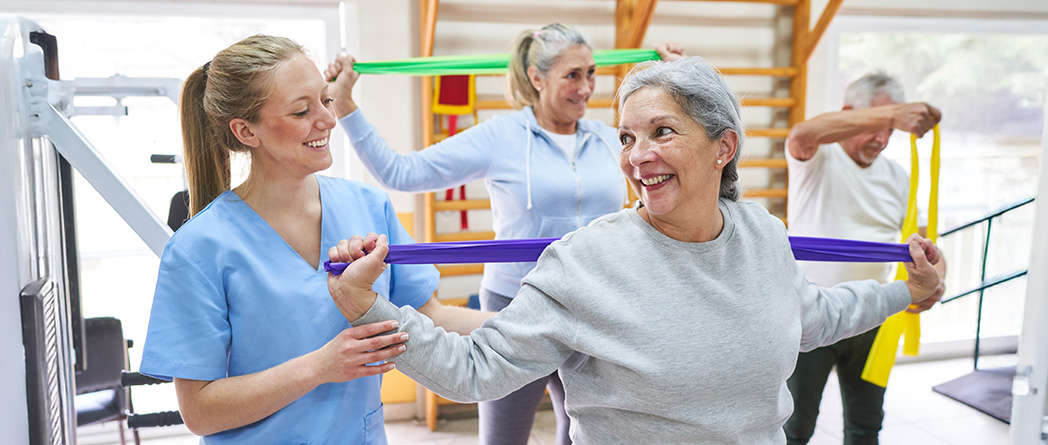
Neuroplasticity and aging
As humans, we experience a gradual cognitive and physical decline in which neuroplasticity plays a part. For humans, this usually starts happening after 70.
Scientists are still discovering exactly how and at what rate this happens. Cognitive decline depends on many different factors, and it’s been observed that aging can even result in some cognitive improvements.
As we age, certain parts of the brain shrink. Blood flow decreases, communication between neurons slows, and inflammation — a common occurrence after an injury or contracting a disease — may be more intense and damaging than when the brain was younger.
These are some commonly impacted functions in older adults:
-
Rate of thinking speed
-
Ability to sustain attention
-
Ability to multitask
-
Information retention
-
Ability to find the right words
How neuroplasticity responds to aging
Similarly to injuries, neuroplasticity helps the brain adapt to its new conditions as we age. Functional and structural neuroplasticity come into play as our brains shrink and blood flow to the brain decreases.
Aging brains are still capable of learning new skills and soaking up new information however. Continuing to learn as you age has profoundly positive impacts on physical, mental, and emotional health, as we’ll show in our section on the benefits of training your neuroplasticity.
Scientists are still discovering the effects of neuroplasticity, especially with regards to aging. One opinion is constant across all research however: training your brain plasticity is crucial, especially as you age.

Benefits to training your brain plasticity
MIT neuroscientist and author Dr. Tara Stewart says this about plasticity and learning: “Think of it as going from a dirt road to a motorway. I could say, ‘I’m going to work on that pathway, which is currently a dirt road. The more I use it, and the more I repeat activities, I can build it up to a motorway.’”
Neuroplasticity should be both maintained and improved, even in a healthy brain. This means keeping up the skills you already have and taking time to learn new ones.
When you work to actively improve your neuroplasticity and build up your “motorways”, you’ll see a range of improvements to your overall health and daily life.
-
Ease in learning new things. Career changes, moving to new countries, and taking on new skills will be much easier because your brain is used to rewiring itself to pick up new things quickly.
-
Faster recovery from injuries. Neurologically speaking, injury recovery is a skill. When information is diverted away from the damaged area and rerouted, it will help if you have healthy neuronal connections already, because these other areas will be used to taking on new challenges, hence your recovery will be faster. If you are good at learning already, you will see the benefits when you need to relearn something.
-
Improved overall happiness. In our brains, learning creates a positive reinforcement loop. Dopamine (the happiness hormone) plays an important role in learning because when we succeed in mastering something or solving a problem, dopamine is released, triggering a conditioned response. As we learn more, our neuroplasticity assists us, making it easier to receive these dopamine rewards and increasing our overall happiness.
-
Prevent and delay cognitive decline from aging or disease. Healthy neuronal connections don’t decay as quickly. If you’ve been training your brain regularly and staying healthy, the age-based cognitive decline is slower because you’ve kept your brain in good shape. For the same reason, this also provides a good defense against the rate of speed of degenerative diseases like Alzheimer’s.

Ways to improve your brain plasticity
Let’s get into a few tips on improving your brain plasticity. You’ll likely find it’s easier than you thought, but the important thing is keeping up with it every day.
Learn a musical instrument
Scientists have determined via brain scanning technologies like fMRI machines that the brains of musicians have notable differences to non-musicians. This is especially true in adults who began playing music as children, but an instrument can be picked up at almost any age.
These differences are observed by way of increased grey matter in motor, auditory, and visuospatial cerebral areas, which help to ignite the neural pathways necessary for healthy neuroplasticity.
Learn a language
The brain has a designated language center where speech-specific information is processed. Learning a language modifies synaptic connections in these areas, which then allows for language receptors to process more information.
The kinds of things we do when learning a language, such as actively listening to radio and podcasts, conversing with others, and playing language games on apps, all strengthen the pathways related to speech recognition in our brains.
Maintain a healthy diet and exercise regularly
Eating foods high in vitamins and minerals nourish the brain, protecting it from what’s called “oxidative stress”. This is the waste produced by your brain when it needs to produce more oxygen to manage a diet heavy in processed and refined foods.
Regular exercise, particularly cardiovascular exercise, increases the proliferation of neurons, promotes critical blood vessel growth, and overall improves the speed and volume of oxygen carried through the brain.
Establishing these conditions for your brain enhances learning and memory, making it easier to learn new skills and improve its plasticity. The benefits to improving diet and exercising more are almost immediate.

Regulate your sleep
While a good sleep schedule and adequate rest have many benefits for mental, emotional, and physical health, there are some direct links to neuroplasticity that are worth mentioning.
Scientists have observed detrimental effects on brain plasticity due to sleep loss at a molecular and electrophysiological level. They’ve also determined that, for patients suffering degenerative diseases or in recovery from brain injuries, a regular sleep schedule can both stall the effects of decline and speed up the recovery.
During sleep, our brains undergo “synaptic renormalization”, which restores the synaptic strength to a sustainable energy level. The brain prioritizes memory and performance gain, and neuroplasticity “recharges” during sleep, so you can continue tomorrow, refreshed.
Getting up at the same time each day, avoiding screens before bed, having dinner several hours before bedtime, and exercising regularly are a few ways to help regulate your sleep.
Practice CBT in everyday life
CBT or Cognitive Behavioral Therapy is colloquially described as “rewiring your brain” for the purposes of better mental health. Particularly useful for anxiety disorders, CBT aims to teach patients to challenge negative thought patterns and change them to improve emotional regulation.
These negative thought patterns can form neural pathways which are then strengthened through repeated negative thinking, which is why CBT is so beneficial. It physically diverts these negative thinking patterns, stopping them from strengthening and contributing to our unhappiness.
CBT is a huge field of research and impossible to summarize here. In relation to neuroplasticity however, it teaches our brains to think differently, and in ways that benefit us. As we continue to challenge negative thinking patterns and broaden our perspectives, we form healthier neuronal connections that lead, overall, to a better experience in life, while rewarding ourselves with healthier neuroplasticity.
Conclusion
A hugely complex topic which scientists are still pouring research into, neuroplasticity is a fascinating capability of our brains. With such profound impacts on injury recovery, learning new skills, and slowing the effects of aging, it’s worth learning more about how it works and what you can do to continue improving your own.



